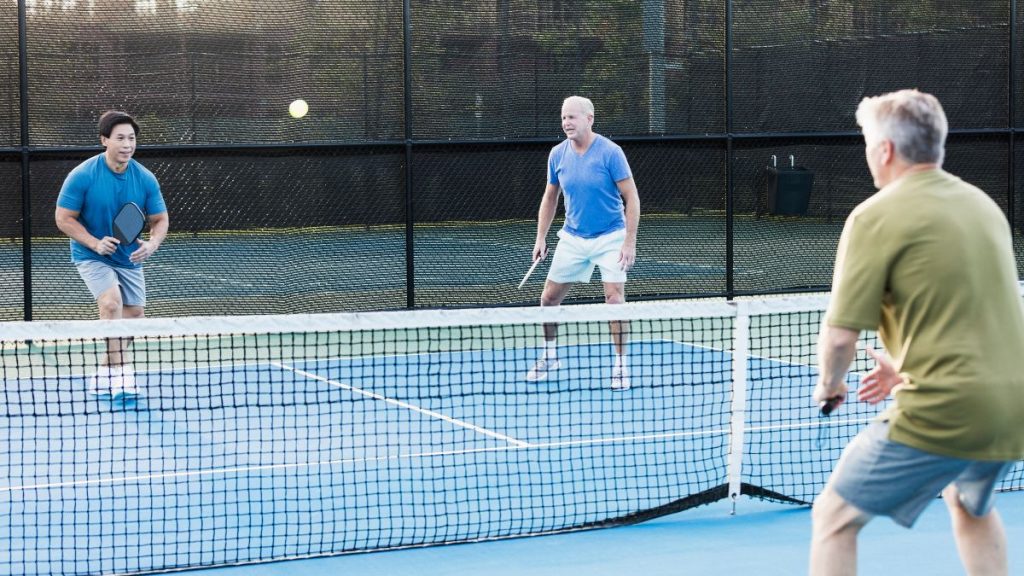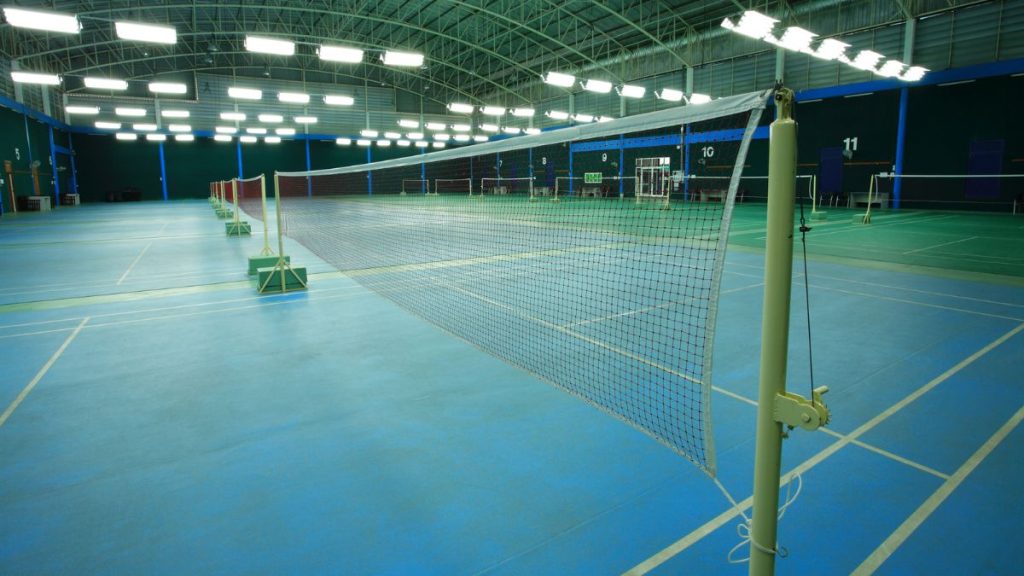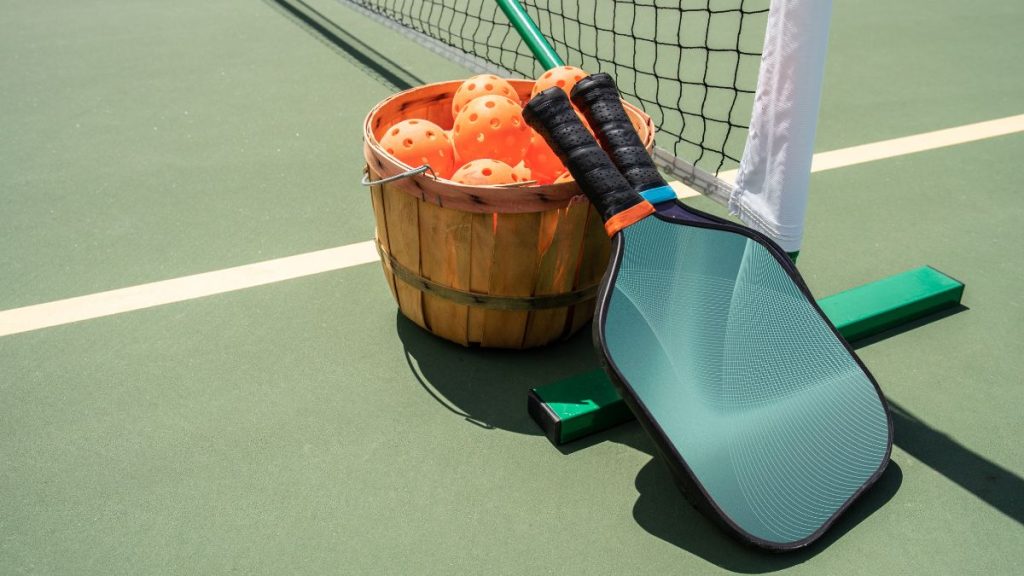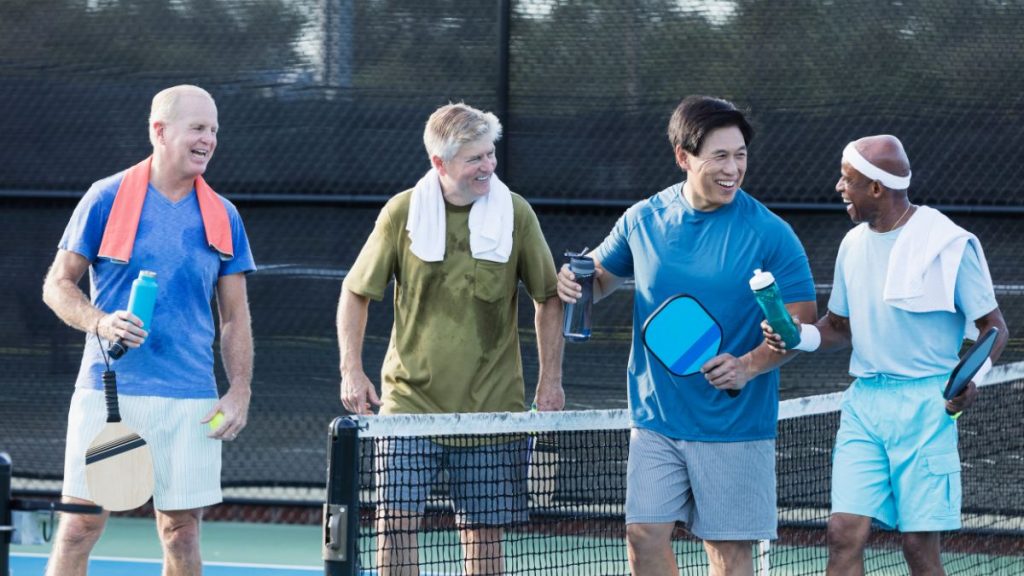Pickleball is one of the most popular sports in America. In fact, there are more than 2.8 million players of pickleball all over the world, and still growing. Although it can be played in singles, playing doubles can provide you with the best experience. This guide is beneficial for new players still learning to play pickleball doubles.
Players of pickleball doubles have different positionings. The server should stand behind the baseline and stays there or just nearby to hit the serve return. In contrast, the receiver will stand at the baseline or close to it so that he can return the serve. To return a shorter serve, the player must move forward.
Let’s learn more about where to stand in pickleball doubles so you can have fun!
What are the Rules for Doubles in Pickleball?
- At the start of the game, only one player from the serving team will be allowed to have a service turn. However, for the remaining parts of the match, both players will be given a chance to have a service turn before the ball is given to the opponents.
- Only one attempt to serve will be granted to the players.
- Serves should be executed diagonally towards the opposite service area. If this is not done properly, then it can result in a fault.
- When serving, it must be done underhand, and you should hit the ball below your waist.
- Serving will be done alternatively on both sides of the court until the players lose a point.
- On the contrary, the receivers should not change sides during the game.
- The Double Bounce Rule states that both teams must play their initial shot of a rally off the bounce.
- The serving team is only allowed to score, and there will be no rally scoring.
- Only a single bounce is allowed on the same side of the court. If there are two bounces, the point will be given to the team hitting the shot.
- Players should not stay in The Kitchen or Non-Volley Zone except if the ball has landed on their side of the court. A player is allowed in the area after a volley.
- The winning team should win 2 of the 3 games. Every game is played to 11 points.
Who Serves First in Pickleball Doubles?
It is important to understand that in pickleball, points can only be given to the serving team, and no scores will be given to the receiving team. This applies to both singles and doubles. The objective of the serving team is to win the rally to score points, while the receiving team wants to win the rally and encourage a side-out, so they get the chance to serve and eventually get some score.
At the start of the game and when a side-out occurs, it is always the player on the right side who gets to serve first. During the initial service turn of the game, only one player on the serving team (the player on the right side) gets the chance to serve. However, after the first service turn, the succeeding service turn will be performed by both players on the serving team it will start on the player on the right side of the court.
Generally, when playing pickleball doubles, it is best to let the stronger server perform the first serve. In this way, there are greater chances of scoring points immediately. When serving, the player must ensure that the ball will land diagonally on the service box of the other end of the court. This refers to the area between the baseline and the non-volley zone line. Then, the ball will be returned over the net.
The returner or the opponent must return the ball over the net so the point will go on. The ball can be returned anywhere as long as it is on the serving team’s side of the court. The player who wins the point will get the chance to serve the next ball, which will be done from the left side of the court.
If the serving team wins the first serve, then serving will be continued by the same player, and it will be done on the other side of the court. As it continues, the player will move alternately from right to left as the team keeps earning points. However, if the opposing team wins a point from the first server, the ball will be handed over to the second player on the serving team. This time, it will be the second player who will continue to serve and move from right to left after winning points. It will keep on going until the team loses the serve, and the ball will be passed on to their opponent.
Where Do You Stand When You Serve in Pickleball?
When it comes to serving in pickleball, the first rule is knowing where the player should stand. The server should always stand in the box created after the baseline and between the sideline and centerline. You should not touch the sideline or the centerline, and ensure that you always remain within the box until the serve has departed from the racket.
There is no limit on the number of times the player is allowed to serve. The server can continue to serve in pickleball until they lose the point. The score is even when the serving is done on the right side. While if it is done on the left side, the score is odd.
After winning the rally, the serving team earns a point, and the server switches sides, either from right to left or from left to right, then serves to the receiver. Both players will change sides whenever the serving team scores a point. However, the receiving side is not allowed to switch sides.
What are the 5 Main Strategies Used in Doubles Pickleball?
1. Communication Is the Key
You must have good communication with your partner. Use the words yours, mine, and other similar terms in every shot, most especially if you or your partner s left-handed or right-handed or if you are not familiar with your partner. Choose one of you who will take the lobs; it could be the faster player. If you want to switch sides with your partner, you should use the word switch. Just make sure that you are in the proper position on the court before the next rally starts.
2. Proper Positioning of the Players
The serving team should stay behind the baseline since they will be serving. They could either choose to stay there or move inside so they can hit the serve return once it bounces. On the other hand, the receiver may stay near or at the baseline so they can return the serve. However, they should move forward whenever there is a shorter serve. Typically, the receiver’s partner stays at the NVZ line, but they can stand anywhere.
3. It’s All About the Placement
In pickleball doubles, the team will likely win the game with fewer unforced errors. According to an expert tournament player, 75% of rallies are won due to fewer errors, while 25% are won because of a good shot. So, instead of attempting to hit a winning shot, you should put the ball back over the net and wait for the winning shot or let your opponents commit that fault. The perfect place to hit the ball is deep down the middle.
4. Approaching the Net
Ultimately, it is a must that the receiver must transfer to the NVZ line once the service has been returned. After the third shot, the team that does the serving should move to the NVZ line together. Players must try to move to the NVZ line as quickly as possible to be ready to hit the next ball from their opponent. But what if you are caught in the middle of the court? You have to stop and be ready to hit the ball. When you are at the NVZ, you should stay there. Avoid moving back, except if you will return a lob, then return to the NVZ line immediately.
5. Partners Should Move Accordingly
The player who hits the ball will determine where and when both partners will move. After hitting the ball, the other should move forward if the player chooses to move toward the NVZ. If both partners are in separate positions, one is at the NVZ, and the other is at the baseline, then it is possible that the opponent can place a winning shot due to the wide gap.
If one player moves to the sideline to return a shot, the other player should move to the centerline to close the gap since the middle shot has a higher percentage than the other sideline.
Conclusion
Knowing your position in pickleball doubles is very important since it could either make you win or lose the game. So, whether you are a younger or an older player, you should stay in the right position during the game.




